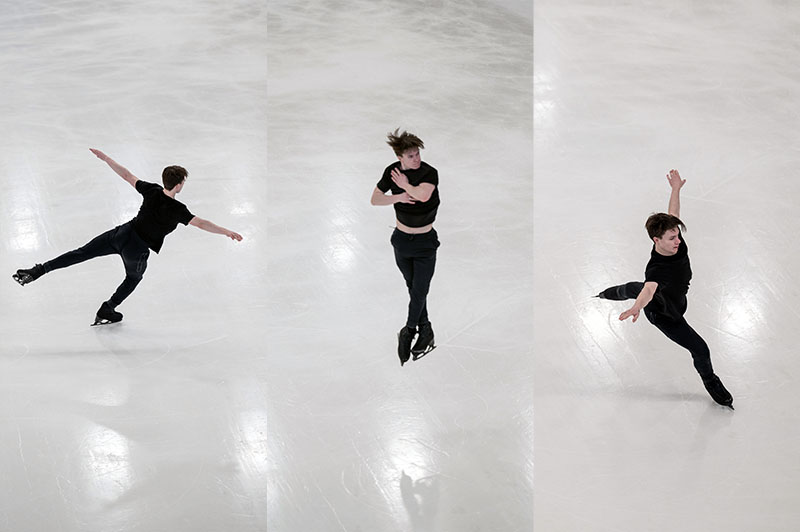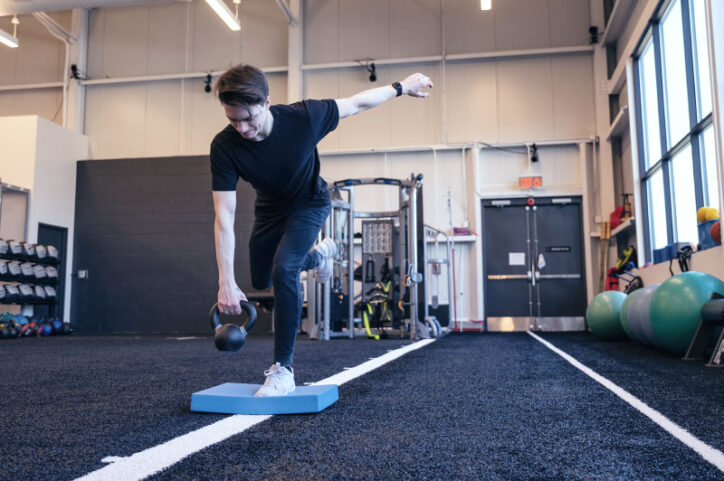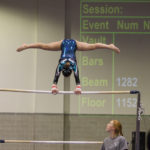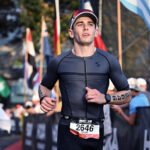Jumping higher, spinning faster: Max’s figure skating story

Thousands of fans around the globe have watched it, but very few people can do it. The quadruple Salchow, also known as the quad, requires that a skater launch themself into the air, spin four times, and land on one leg — ideally without falling or wobbling.
The best figure skaters make skills like the quad look effortless. But most people don’t see the hours of high-impact training or the stress it puts on the body. “Whenever you land a quad, you’re landing with seven to eight times your body weight,” says skater Max Naumov. “And you’re doing that constantly.”
Max landed his first quad when he was 19. “It was a very surreal moment for me,” he says. After 13 years of training, he recalls the moment as both crazy and validating. “All that time and energy paying off.”
Growing up on skates
Max, now 22, isn’t kidding when he says figure skating is his life. His parents are former world champions who transitioned to coaching before he was born. He started skating when he was 5, taking to the ice once a week at first, then more frequently as he got older and stronger. “Slowly but surely, I started getting better and better.”

As his skills improved, his dreams got bigger. “Ever since a young age, I’ve had a plan of what I wanted to achieve.” He won his first national title when he was 12 and soon had a large collection of national and international medals.
But when he was 15, he came home from a training camp with severe ankle pain. After visiting a number of doctors, Max and his parents made an appointment with Dr. Ellen Geminiani (Dr. Gem) of the Sports Medicine Division. As a physician for U.S. Figure Skating, she understood the nuances of skating injuries, such as those caused by landing on the same ankle thousands of times. And as a former competitive figure skater, she respected Max’s ambitions.
Together, she, Max, and his coaches found ways to balance his athletic goals with his health and well-being. “Coaches and doctors don’t always have the best relationships,” says Max. One typically focuses on the next competition while the other insists on rest. Unlike some of his figure skating friends, this wasn’t the case for Max. “Dr. Gem understands the sport and what goes into it,” he says. “It’s a lot easier to come up with a plan with someone who’s willing to work with you.”
A huge network of people
Dr. Matthew Milewski of Boston Children’s Orthopedic and Sports Medicine Department operated on Max’s ankle, removing a bone chip that was rubbing on the tendon above it. Over the next several years, as he performed ever-more challenging moves and put increasing strain on his body, Max visited the Sports Medicine Division regularly. “Boston Children’s has a huge network of people, and we used as many resources as we could.”

Dr. Geminiani and the team at The Micheli Center for Sports Injury Prevention (part of the Sports Medicine Division) helped Max increase his overall strength and mobility. Injury prevention specialist Michael Cook and trainer Eric Menchi led him through targeted exercises to help him avoid injury — exercises that also helped him jump higher and spin faster. For physical therapy, he saw Heather Southwick, a former dancer who specializes in performing artist athletes. When he experienced hip pain, Boston Children’s sports ultrasound specialists used regenerative medicine to activate his body’s healing capabilities.
“Everyone on the team knows what matters for athletes and how to help them achieve it,” says Max.
These days, Max and Dr. Geminiani have a running joke. “Two or three weeks before a competition, something will flare up, and I’ll call Dr. Gem.” The two of them will talk and then she’ll schedule time with the right specialist to stabilize the area in question so that Max can compete without injury.
Eyes on the Olympics
Like any professional skater, Max approaches his time on the ice with focus and determination. “This is my occupation,” he says. As each season winds down, he and his choreographer get to work developing new programs for the coming year. “Those are some of the coolest moments I have on the ice, just being able to express yourself through the programs and music.”

Now ranked fourth among male figure skaters in the U.S., Max has his sights set on two major events: the 2025 World Figure Skating Championships in Boston and 2026 Winter Olympics in Milan and Cortina d’Ampezzo. As first alternate for the World Championships in 2024, he has a strong chance of competing in both.
Watching Max float across the ice, seeing the height of his jumps and his grace as he glides from one move into the next, it’s hard to believe he doesn’t have wings. His skills on skates are a credit to his many years of hard work — and support from his coaches, clinicians, and trainers.
“When you get to a high level in sport, you have to know how to train, and you have to know how to treat injuries,” he says. “I’m very thankful for everyone at Boston Children’s and The Micheli Center who’ve helped me come this far.”
Learn more about the Sports Medicine Division and The Micheli Center for Injury Prevention.
Related Posts :
-

Fancy footwork: Two figure skating experts on injury prevention
Amazing costumes, breathtaking artistry, and outstanding athleticism. No wonder figure skating is a Winter Olympics must-watch for millions of people. ...
-

A gymnast gets her spring back
In order to master the pirouette, Mikayla Comeiro drew on many of the strengths she’d developed as a competitive ...
-

My story of bouncing back from osteochondritis dissecans
Injuries suck — no better way of putting it. The physical pain is terrible on its own, but emotionally they can ...
-

One athlete, two hip surgeries, three Ironmans
Trevor Spence grew up playing just about every sport he could. When he was 3, he laced up his first pair ...





